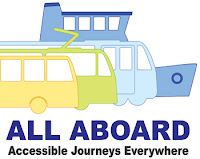Thanks to Ashley for this piece about his dad Bruce....
The dining table was bristling with entrees
when I arrived, glasses waiting to be filled with drink reflecting the warm
glow of the ceiling lights. In the
kitchen beyond a delicious smell wafted from a pot on low heat. No one was around. I jumped through the sliding doors, eager to
get on the other side of the condensation coated windows, to escape the
southern highlands cold I used to love.
I notice a sign resting on top of a CD rack
against the far wall. “Teenagers: Sick
of your parents bossing you around? Grow
up, get a job, move out, while you still know everything!” Next to it a candle
has allowed its wax to trickle over the surface of the CD rack and run over the
edges, leaving several stalactites hanging in thin fingers.
I hear a slow creaking across the
floorboards from deeper within the old house.
“Hello Ash!” My dad, with a broad smile maneuvers his
wheelchair into the room. His posture is
awkward. His grey beard and long kaftan make
him look like a portly wizard. “How’s the flat going?” he always
asks.
“It’s fine,” I always say, but this time: “Its
alright if you don’t mind the cockroaches.”
Mum strides into the room and hugs me. “Skinny boy!” She practically shrieks as she
pinches at my ribs. After being
questioned about how much I’ve been eating I sidle towards the table to get
some food.
Mum then turns on dad. “Bruce, this place is such a mess, look at
all this crap you leave everywhere!” She stabs a finger at one end of the table
where there is a raised tray table on caster wheels, perfect for sitting at in
a wheelchair. It is separated from the
display of entrees by newspapers, printed sheets, an open diary with pages
covered in indecipherable swirls, slowly falling apart.
“Yeah right,” says dad. “I’m the only one who ever cleans anything up
around here.” He grasps at a metal claw
which rides on the back of the chair. “Look.” The claw’s unseeing pincers bite at some
loose sheets which have fallen to the floor.
Dad, with jerky movements, leans over the side of his chair, trying to
get the claw under the impossibly thin pages.
On the last attempt, the claw jumps out of his hand and clatters to the
floor. I crouch to gather the paper as
mum returns the claw. She shakes her
head.
One in a thousand Australians will develop
Multiple Sclerosis in their lifetime. No
one is sure why, or how to prevent it or cure it. Dad, being diagnosed with MS the year I was
born, has been living with the disease for 21 years. Over that time his own immune system has been
attacking the insulation around his nerves, causing signals from the brain to
be disrupted, affecting his movement and balance. With, and often despite his family, he has
remained strong and helps to advise people in his situation.








